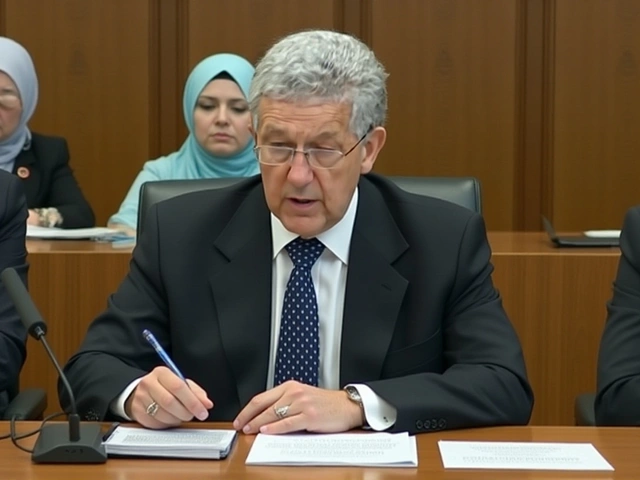
When Office of the Australian Information Commissioner (OAIC) and New Zealand Privacy Commissioner’s Office announced a joint push for broader access to information on October 3, 2025, the tech community caught a whiff of change.
The call came from Canberra and Wellington during a bilateral Australia‑New Zealand Data Innovation ForumCanberra Convention Centre. Officials said unlocking data held by government agencies could add up to AU$4.2 billion to the region’s digital economy over the next five years.
Why regulators are urging more data openness
Australia’s Anna Brown, Assistant Privacy Commissioner explained that existing information‑access frameworks are “pie‑cemealed” and often leave innovators staring at red tape.
Across the ditch, John Smith, Chief Technology Officer at TechNZ, echoed the sentiment: “If we can’t get clean, timely data, we end up reinventing the wheel for every pilot project.”
The push is also a response to the 2023‑24 surge in AI‑driven startups that hit a data‑availability wall, according to a report by the Australian Competition and Consumer Commission (ACCC). That report noted a 27 % drop in prototype deployments when data requests were stalled beyond 30 days.
Details of the joint proposal
Both regulators unveiled a three‑pronged plan:
- Standardise request‑handling timelines to 15 business days for non‑sensitive datasets.
- Create a shared “Data Innovation Hub” where anonymised government data sets are catalogued and made API‑ready.
- Introduce a modest fee‑waiver scheme for qualifying startups, funded jointly by the Australian Treasury and New Zealand’s MBIE.
According to the draft consultation paper released on October 2, the hub will host more than 200 datasets ranging from public‑transport usage in Sydney to climate‑impact models from the New Zealand Ministry for the Environment.
“We’re not opening the floodgates for raw personal data,” said Dr Lily Cheng, senior policy analyst at University of Canberra’s Centre for Data Ethics. “The focus is on aggregated, de‑identified information that fuels innovation while safeguarding privacy.”
Industry and privacy group reactions
The startup ecosystem cheered the move. Launchpad Sydney reported that 12 of its cohort companies have pending data requests that have been stuck for over two months.
On the other side, the Australian Privacy Foundation warned that faster access could invite “mission‑creep” where agencies feel pressured to release borderline‑sensitive data.
In response, the OAIC pledged a new oversight board comprising privacy experts, industry reps, and indigenous representatives to vet high‑risk requests.
Potential impact on the Australasian tech sector
Analysts at Morgan Stanley Australia project that the Data Innovation Hub could seed at least 45 new AI‑driven products by 2028, creating roughly 3,800 jobs.
For New Zealand, the Ministry for Business, Innovation and Employment (MBIE) estimates that increased data accessibility could lift the nation’s tech export value by NZ$1.1 billion.
Meanwhile, satellite‑imaging firms see an opening to blend government‑collected environmental data with their own feeds, potentially improving climate‑risk models for insurers.
Next steps and timeline
The consultation runs until November 15, 2025. Regulators expect to finalise the policy by early 2026, with the Data Innovation Hub slated for a beta launch in March 2027.
Stakeholders can submit written comments via the dedicated portal hosted on the OAIC website. A series of regional workshops—Melbourne, Auckland, and Perth—are scheduled for late November to gather grassroots feedback.
Background: From FOI to the data economy
Freedom of Information (FOI) laws in both countries date back to the 1980s, originally designed to promote government transparency. Over the last decade, however, the rise of data‑centric business models exposed a gap: FOI wasn’t built for high‑volume, machine‑readable datasets.
Australia’s 2020 Corporate Plan for the OAIC first flagged the need for a “modernised information‑access regime”. New Zealand’s AI Strategy, published on July 8, 2025, called for “national data infrastructure” as a cornerstone of responsible AI development.
Both documents converged on a common theme—without reliable, lawful pathways to public data, the region risks falling behind the US and EU in the emerging digital economy.
Frequently Asked Questions
How will the new data‑access rules affect small startups?
Qualified startups will benefit from faster request processing—down to 15 business days—and may qualify for fee waivers under the joint scheme. This could shave weeks off development cycles, letting them bring AI‑powered services to market sooner.
What types of data will be included in the Data Innovation Hub?
The hub will host anonymised datasets such as transport usage, health‑system performance metrics, environmental monitoring, and education outcomes. All data will be stripped of personal identifiers and provided via standardised APIs.
What safeguards are in place to protect privacy?
An oversight board will review any request that approaches sensitive thresholds. Additionally, agencies must conduct privacy‑by‑design assessments before releasing any dataset, ensuring de‑identification meets international standards.
When can businesses expect the hub to be operational?
A beta version is planned for March 2027, with a full public launch anticipated by late 2027 after a six‑month testing period involving pilot partners from both countries.
Why are Australia and New Zealand collaborating on this initiative?
Both nations share a tightly integrated digital market and face similar challenges in scaling AI startups. By aligning policies, they aim to create a seamless data pipeline that benefits entrepreneurs on both sides of the Tasman Sea.






Write a comment